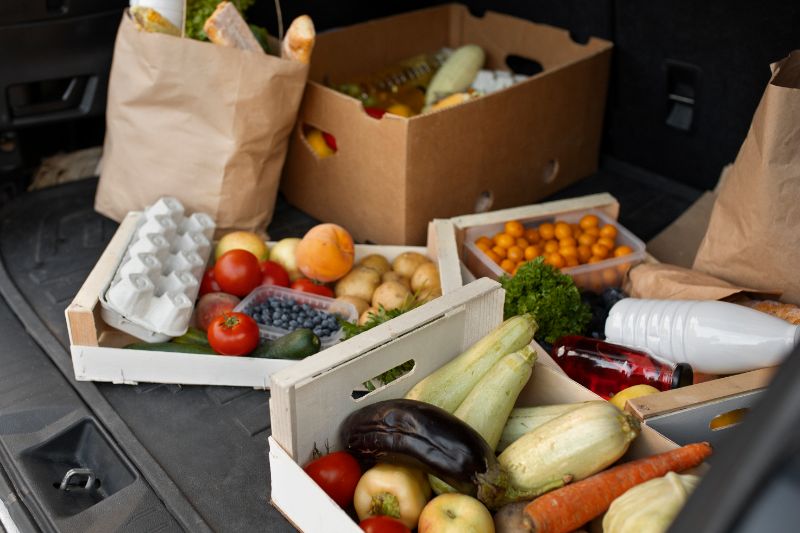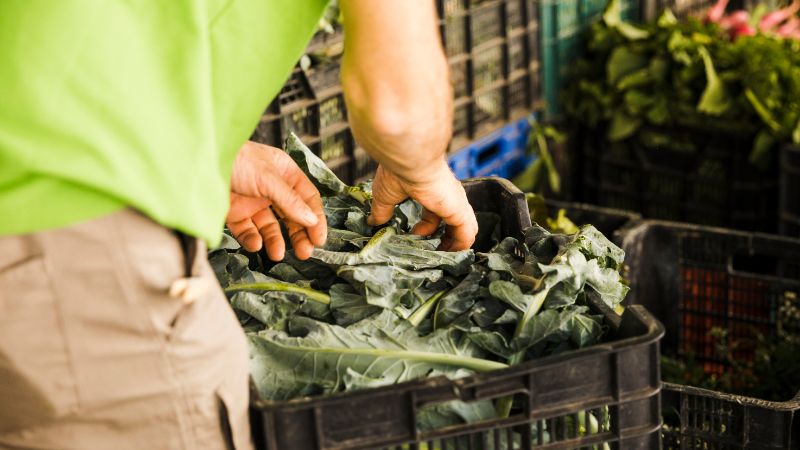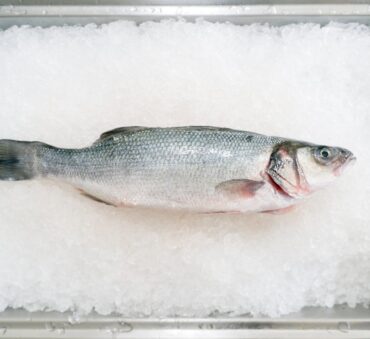Due to the severe environmental, economic, and social consequences of food waste, the United States set a goal to cut food loss and waste in half by the year 2030. While this goal has spurred many initiatives, we still have a long way to go to improve overall sustainability efforts.
Since awareness is the first step to making large-scale change, it raises the question: what causes food waste?
There are many different causes of food waste, meaning we must explore its unique origins throughout the supply chain to understand the complexity of the situation. Keep reading to delve into the causes of food waste at the production, transportation, retail, and consumer levels and identify potential solutions to the problem.
Key Takeaways
- Causes of food waste at the farm level include overproduction, weather and pests, improper harvesting practices, and losses during processing. Better forecasting methods and improved harvesting and storage techniques are required at this level to help reduce waste.
- During transportation, food loss is often caused by problems in packaging, storage, handling, and transit. To address these issues, improved cold chain logistics, better handling practices, and enhanced packaging should be explored.
- Large quantities of waste are generated at the retail level due to overstocking, marketing strategies, portion sizes, imperfect produce, and confusion regarding expiration dates. Retailers can reduce waste by conducting regular food waste audits to help them identify and analyze how much waste is being produced in their supply chain.
- Consumers are also big contributors to waste, often due to over-purchasing and over-preparation, improper food storage, large portion sizes, and an overall lack of awareness. Awareness campaigns can address food waste causes by addressing proper storage and meal planning techniques while raising awareness of the consequences of waste.
Why Do Americans Waste So Much Food?
There’s a long history of food waste in America, with industrialization and urbanization provoking a huge change in food production and waste. The invention of canning and the surge in mass production after the Great Depression and World War II were huge contributors to new consumer behavior, shaping modern consumption habits.
Over the years, the abundance of food has cultivated a throwaway culture in the United States, leading to high amounts of waste that could otherwise be prevented or addressed in a more environmentally friendly way.
When evaluating why we throw away so much food, it becomes evident that there’s a lack of awareness and education about the consequences of food waste, highlighting the importance of increased awareness campaigns, policy changes, and initiatives to drive large-scale change.

The Psychology of Food Waste: Habits That Cause Food Wastage
An unfortunate attitude towards food is engrained in U.S. culture, with everyday habits and routines leading to waste throughout the supply chain. Impulse buying, bulk purchasing, the desire for perfect-looking food, and huge portion sizes are all examples of how common consumer behavior contributes to the food waste crisis.
There are also multiple psychological factors that lead to unnecessary waste, such as the role of habits and emotions in driving food waste behavior. This includes prioritizing aesthetics over practicality, discarding healthy fruits and vegetables because of imperfections, and overconsumption due to the fear of not having enough food.
Causes of Food Waste
So, what are the causes of food waste?
As we’ll see below, food waste occurs at every stage of the supply chain, including production, transportation, retail, and consumer levels.
Causes of Food Waste at Farms
There are various causes of farm waste, including:
- Overproduction: Overproduction causing food waste is a huge problem at the production level, often due to poor demand forecasting or changes in market demand and economic incentives. Many farmers also produce more than required due to strict grading and sorting processes, causing them to discard ugly fruits and vegetables to comply with market standards.
- Weather and pests: Severe weather conditions and pests create unfavorable conditions for farming, leading to waste at the agricultural level. Improper infrastructure and storage also contribute to this issue, resulting in significant losses of crops and revenue for farmers.
- Harvesting practices: Inefficient harvesting techniques, such as lack of precision agriculture technology, improper harvest timing, labor shortages, and selective harvesting based on market standards, all contribute to food waste.
- Processing: Losses during processing may be due to quality control, packaging, and problems with drying and storage facilities.
How to Fix this?
There are various ways to reduce waste at the farm level, including:
- Better forecasting methods: Enhanced communication and the adoption of advanced technology help improve demand forecasting, therefore reducing waste by aligning supply with demand.
- Improved harvesting and storage techniques: Improved pre- and post-handling techniques, investment in proper infrastructure, and the use of data analytics and predictive modeling to optimize harvesting and storage practices are all effective strategies for reducing waste.
- Promoting imperfect produce: Promoting the use of cosmetically imperfect produce through awareness campaigns can help change consumer expectations and reduce the amount of food waste associated with ugly produce.

Food Damage During Transportation
Improper transportation logistics lead to damaged products and losses in the supply chain. Common causes of food loss at this stage include:
- Packaging: Damaged or inadequate packaging is a big contributor to spoilage, reducing the product’s shelf life and leading to food loss.
- Storage: Inadequate storage conditions lead to food degradation for multiple reasons, including inconsistent temperature control, exposure to excess humidity, and improper pest control measures.
- Handling: Poor handling practices can cause damage to goods, therefore making them unfit for consumption.
- Transportation: Transportation inefficiencies, such as transit delays caused by traffic congestion, can lead to spoilage and loss.
How to Fix this?
To reduce waste during transportation, the following solutions should be explored:
- Enhanced packaging: Innovative packaging solutions reduce waste by using the right materials to protect distinct products. This includes leveraging smart packaging to monitor the freshness of products, using biodegradable packaging, and creating smaller serving packages to reduce over-purchasing.
- Improved handling: Comprehensive staff training is required to improve stocking and food handling practices, therefore reducing waste during storage and transportation.
- Improved cold chain logistics: Enhanced cold chain logistics is necessary to prevent spoilage, which includes using advanced monitoring and tracking technologies, investing in proper storage facilities, and creating a more accurate temperature control system.
- Improved transport logistics: By optimizing delivery routes and investing in technology to monitor and optimize solutions in real-time, waste due to transit delays can be minimized.
Retail (Restaurants, Grocery Stores, and Supermarkets)
Causes of food waste at the retail level include:
- Overstocking: Inaccurate demand forecasting and changes in consumer demand are both contributors to overstocking, leading to large amounts of food waste at supermarkets.
- Discarding ugly produce: Discarding produce that doesn’t meet aesthetic standards is a huge problem at every stage of the supply chain, with high consumer expectations driving strict sorting and grading processes.
- Portion sizes: Serving excessively large portions and throwing away leftovers is a big contributor to food waste at restaurants.
- Marketing strategies: Marketing strategies not only cause food waste but also contribute to consumer expectations and behavior. Strategies may include discarding ugly produce to meet consumer expectations and “buy one, get one free” offers and promotions that encourage bulk purchasing.
- Equipment malfunctions: Temperature fluctuations, oven or cooking malfunctions, and system failures can all cause food to spoil faster.
- Expiration dates: The lack of food label regulations in the United States causes confusion regarding expiration dates, leading to waste at the retail level.
- Lack of food tracking systems: Improper food tracking systems lead to overstocking, inefficient stock rotation, and inaccurate demand forecasting, all of which cause severe losses at the retail level.
How to Fix this?
There are multiple solutions that can help reduce waste at the retail level, including:
- Conducting regular food waste audits: Food waste audits help businesses identify how much waste they generate, what type of waste, and where the waste is being produced in their supply chain. This helps them create innovative solutions based on their specific needs.
- Implementing better tracking systems: Tracking food waste helps retailers monitor food spoilage and waste in real-time, allowing them to make quick changes to address the problem.
- Adopting technology: Food waste technology helps businesses monitor inventory levels more accurately and identify waste patterns. Food waste apps are a great example of how technology can be easily implemented in many different processes, from donation platforms to apps that help businesses manage inventory. Using AI to fight food waste is also becoming increasingly popular, as it uses predictive analytics to improve demand forecasting and adjusts ordering practices accordingly.
- Establishing partnerships: Establishing partnerships with local food banks and waste management companies helps retailers donate food to those in need and implement recycling strategies to reduce landfill use.
- Training staff: Training staff on best practices for handling and managing food can help optimize processes and reduce waste.

Consumer Level
Household food waste is a huge contributor to overall waste, but why do people waste food?
Common causes include:
- Misunderstandings of expiration dates: Confusion regarding food waste labels leads to the premature disposal of food, causing large quantities of waste at the consumer level.
- Over-purchasing and over-preparation: Over-purchasing is often driven by promotions and poor meal planning, causing individuals and families to purchase more food than they can consume and misjudging portion sizes when they cook.
- Improper food storage: Inadequate storage methods cause food items to spoil faster, leading to surplus food waste.
- Large portion sizes: Cultural norms surrounding portion sizes, such as ordering more food than you can consume, the social pressure to serve or accept large quantities of food, and retailers promoting large portion sizes, all lead to surplus food waste.
- Lack of awareness: There’s a general lack of awareness about proper storage and meal planning techniques, as well as the environmental, economic, and social impact of food waste.
How to Fix this?
To reduce waste at the household level, the following strategies can be implemented:
- Improved storage techniques: Investing in airtight containers, labeling containers to track freshness, and keeping food at the desired temperature can all extend the shelf life of household products.
- Repurpose ingredients: Using food scraps in new recipes, composting food waste, and getting involved in food waste collection services are all ways to turn food scraps into new, valuable products.
- Meal planning: Meal planning helps households identify which ingredients they need and how much, helping reduce over-purchasing and minimize waste.
- Improved awareness: Raising awareness is the first step to reducing waste, which may include campaigns over proper food storage techniques, how to read expiration dates, and the importance of using leftovers.
The Bottom Line
Diverting waste from landfills helps reduce the environmental, economic, and social impact of food waste, making it an important component of sustainability goals. For businesses seeking tailored solutions that address the different causes of food waste throughout the supply chain, we recommend partnering with an experienced food waste management company.
At Shapiro, we provide comprehensive food waste disposal services. Since starting our journey, we’ve diverted over 1,060,000,000 pounds of organic waste from landfills all around the country, showcasing our commitment to sustainability efforts.
If you’re interested in learning how you can leverage our waste management solutions to reduce large-scale waste, contact us today.
Baily Ramsey, an accomplished marketing specialist, brings a unique blend of anthropological insight and marketing finesse to the digital landscape. Specializing in educational content creation, she creates content for various industries, with a particular interest in environmental initiatives.



